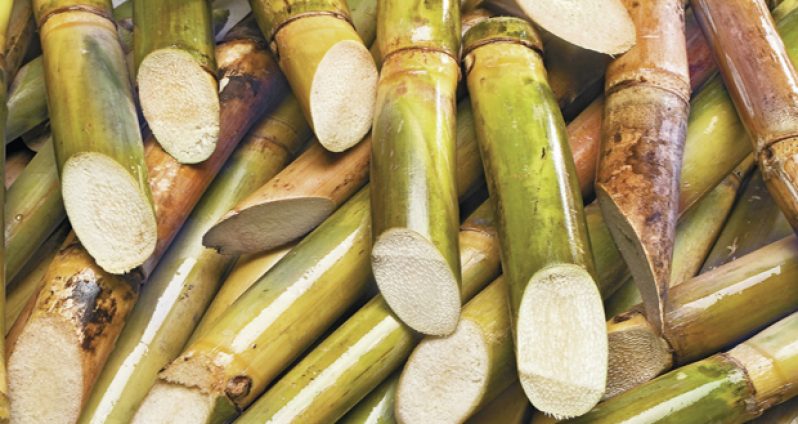THE 2007 turnaround plan for the sugar industry has anticipated that 30 per cent of the cane supplied to the Guyana Sugar Corporation (GuySuCo) would come from private farmers by 2016. However, Agriculture Minister Dr. Leslie Ramsammy has acknowledged that the industry is still a long way from achieving that goal.“Currently, about 10 per cent of the cane comes from private farmers… At this rate, I personally believe we should reach 15 per cent contribution by 2016,” the Agriculture Minister has said.
He maintained, though, that efforts are underway to both encourage and support the participation of private cane farmers in GuySuCo’s recovery.
“GuySuCo has been mandated to look at how we could start in all of the estates to hand land to private farmers, because the 30 per cent is still a goal,” Minister Ramsammy said.
2014 PILOT
Dr Ramsammy said that on the cards for 2014 is a pilot project which will see current employees of GuySuCo being supported to become suppliers for the industry. “They have knowledge, and if GuySuCo can provide support, we can help them become successful. Instead of them being our employees, they can become our suppliers,” Ramsammy said.
Years ago, private cane farming was big business, with hundreds of farmers abandoning traditional crops and turning to cultivation of sugar cane, which paid handsome dividends. However, with the drop in prices and contraction of the sugar industry in the 1980s and the early 1990s, cane farming became unprofitable, and the business accordingly came to a virtual halt.
Minister Ramsammy added that much has been learnt since the idea was introduced in a move made by the late Agriculture Minister Satyadeow ‘Sash’ Sawh. “We have now, since 2000 to now, during the period of Minister Sawh, enough experience of what works and what doesn’t, and how we need to modify the model for private cane farmers,” he said.
Ramsammy said the expectation is to have private cane farmers eventually being involved as suppliers for all the estates along the sugar belt. “There are people wanting to be involved yes, but we have to create a mechanism to allow farmers to be able to utilize the land in the best way,” the minister said.
He made is clear that, in encouraging private cane farming, the focus is on making support available to ensure efficient use of the land under cultivation.
SUPPORT MECHANISM
The minister said that moves are being made to improve the “support mechanism” for private cane farmers, be they GuySuCo employees turned suppliers, private individual famers, or the existing co-ops engaged in cane farming.
Ramsammy explained that the co-op model seen in the Canje and Albion areas has not worked as well as was expected, particularly as it relates to the land being under-cultivated. He said: “I have been working with the committee, a representative group for the co-ops, to see how we can facilitate better participation of co-ops. In the Lower and Central Corentyne, they have not functioned the way we envisaged, and we need to improve that.”
Minister Ramsammy maintained that efforts are being continued to ensure that the Agriculture Ministry and the co-op groups work together. He referred to creation of the $10M revolving fund as an initiative made as recently as 2010. The fund was launched to help private cane farmers increase their production, with promises of better prices from the Guyana Sugar Corporation (GuySuCo). It was conceptualized by the National Cane Farmers Committee, which raised the first $5M. The other $5M was put in by GuySuCo. The fund was particularly geared at assisting smaller farmers to improve cane production. Farmers would be able to borrow up to $200,000 at a three percent interest rate.
As it relates to individual private cane farmers, Ramsammy explained that the Skeldon expansion and modernization project included consideration for opening new lands for private cane farming. He noted that between 160,000 and 170,000 tonnes of cane were expected to be supplied to the Skeldon factory.
“We are hoping this can be expanded to up to 350,000 tonnes a year, and we are working with them to ensure we get there,” Ramsammy said.
The minister lauded the success of private individual cane farmers in Region Three (Essequibo Islands/ West Demerara). He said: “The model of using private individual cane farmers works best in Region Three. A substantial amount of cane for the Wales Estate comes from private farmers in the Canals Polder and other areas in the region.
“We already have very successful farmers, and we can use that to increase their own cultivation area, and also use it as model for other areas, because we do not want to exclude new farmers from coming in.”
Dr Ramsammy said that, in 2012, some 1,000 acres of land were transferred to private individual farmers, and the first crop will come in during 2014. “We are looking to have the first 500 acres harvested for the first crop in 2014 to supply the Uitvlugt Estate, and the second 500 acres will be included for the second crop,” he said.
Dr Ramsammy stressed that increasing the supply of sugar cane to the industry through collaboration with private suppliers will support the turnaround. He deemed this a fact underscored by perusal of the GuySuCo turnaround plan.
Written By Vanessa Narine



.jpg)








